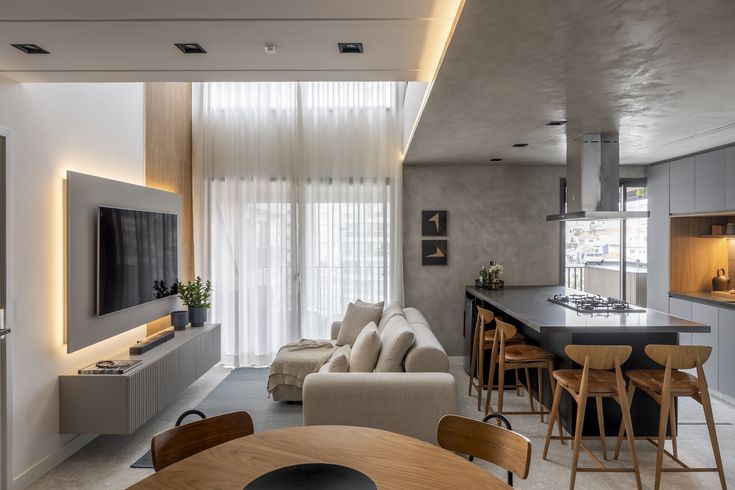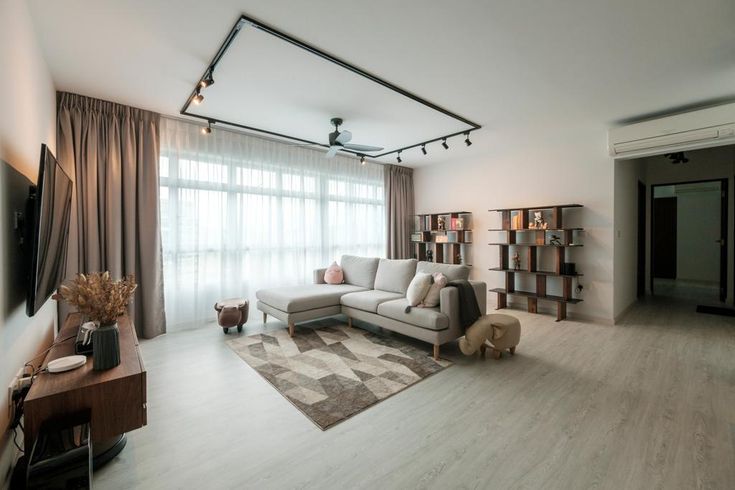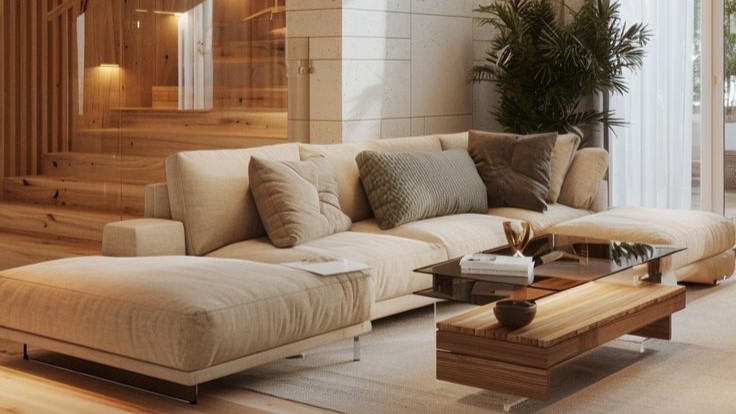Small Living Room, Big Style: Furniture Arrangement Tips You Need
Small Living Room, Big Style: Furniture Arrangement Tips You Need – Creating a functional and stylish living room in a small space can feel like solving a complex puzzle. Limited square footage doesn’t mean you have to sacrifice comfort or aesthetics. With strategic furniture arrangement and smart design choices, you can maximize your space while showcasing your personal style. Here are essential furniture arrangement tips to help you transform your small living room into a cozy and chic haven.
1. Assess Your Space
Before diving into furniture shopping or rearranging, take time to evaluate your living room. Measure the dimensions, note architectural features like windows, doors, and outlets, and identify any focal points such as a fireplace or a large window with a scenic view. This information will guide your layout decisions and help you make the most of every inch.
Key Tips:
- Use graph paper or digital tools to create a scaled floor plan.
- Take note of traffic flow to ensure the arrangement doesn’t obstruct pathways.
- Consider how natural light enters the room, as it can influence furniture placement.
2. Prioritize Multi-Functional Furniture
In small living rooms, every piece of furniture should earn its place. Opt for multi-functional items that serve more than one purpose. These versatile pieces save space while enhancing functionality.
Ideas to Try:
- A sofa bed or futon for seating and sleeping.
- Storage ottomans that double as coffee tables.
- Nesting tables that can be tucked away when not in use.
- A foldable dining table or wall-mounted desk for flexible functionality.
3. Choose the Right-Size Furniture
Oversized furniture can overwhelm a small space, making it feel cramped. Instead, select pieces that are proportional to your room’s dimensions.
Guidelines:
- Opt for sofas with slim arms and low backs to create an airy feel.
- Use armless chairs or loveseats for extra seating without bulk.
- Choose lightweight and visually open furniture like glass or acrylic tables.
4. Embrace Vertical Space
When floor space is limited, think vertically. Utilizing your walls effectively can free up valuable square footage and add visual interest.
Ideas:
- Install floating shelves for books, plants, or decorative items.
- Mount your TV on the wall instead of using a bulky media console.
- Use tall, narrow storage units to maximize storage without taking up much floor space.
5. Create Zones
Even in a small living room, defining separate zones can make the space feel more organized and purposeful. Use rugs, lighting, or furniture placement to delineate areas for lounging, working, or entertaining.
Examples:
- Place a small rug under the coffee table to anchor the seating area.
- Use a console table behind the sofa to create a subtle boundary.
- Position a floor lamp next to a reading chair to designate a cozy reading nook.
6. Opt for a Light and Neutral Palette
Light colors can make a small space feel larger and more inviting. Neutral tones like whites, creams, and pastels reflect light, giving the illusion of a more expansive room.
Design Tips:
- Use a monochromatic color scheme to create a cohesive look.
- Add texture and patterns through throw pillows, rugs, or curtains to keep the space interesting.
- Incorporate pops of color in small accessories to avoid a bland appearance.
7. Play with Furniture Placement
Strategic furniture placement can make all the difference in a small living room. Experiment with different layouts to find what works best for your space.
Strategies:
- Angle furniture toward the focal point to create a sense of harmony.
- Float furniture away from walls to make the room feel less boxed in.
- Use corner spaces wisely with L-shaped sofas or custom-built seating.
8. Maximize Natural Light
Natural light can open up a small room and make it feel airy. Make the most of your windows to enhance brightness and create a cheerful atmosphere.
Suggestions:
- Avoid heavy drapes and opt for sheer curtains or blinds.
- Position mirrors strategically to reflect light and create an illusion of depth.
- Keep windowsills clutter-free to allow maximum light flow.
9. Incorporate Smart Storage Solutions
Clutter can quickly overwhelm a small living room. Implement smart storage solutions to keep your space tidy and organized.
Ideas:
- Use furniture with built-in storage, like benches or coffee tables with hidden compartments.
- Install wall hooks or pegboards for hanging items.
- Add baskets or bins to open shelving for a streamlined look.
10. Decorate Mindfully
Decorative elements add personality to your living room, but too many can make it feel chaotic. Be selective and intentional with your decor choices.
Tips:
- Use a statement piece, like an oversized artwork or a bold rug, as the focal point.
- Keep decorative items in odd-numbered groupings for a balanced look.
- Incorporate greenery through potted plants or hanging planters to add life to the room.
11. Invest in Quality Lighting
Good lighting is crucial for small spaces. Layering different types of lighting can make the room feel warm and inviting.
Lighting Tips:
- Combine ambient, task, and accent lighting for a balanced effect.
- Use floor lamps, table lamps, or wall sconces to add versatility.
- Consider dimmable lights to adjust the ambiance based on your needs.
12. Avoid Overcrowding
While it’s tempting to fill your living room with everything you love, less is often more in a small space. Focus on essential pieces and leave enough open space for movement and breathing room.
Tips:
- Leave at least two feet of clearance around major furniture pieces.
- Avoid blocking pathways with furniture or decor.
- Resist the urge to over-accessorize; stick to a few well-chosen items.
Final Thoughts
A small living room doesn’t have to feel limiting. With thoughtful planning, the right furniture choices, and a touch of creativity, you can create a space that’s both stylish and functional. Remember, the goal is to make the most of what you have while reflecting your unique personality. Whether you’re hosting friends, relaxing with family, or enjoying some quiet time, your small living room can be a big style statement.






